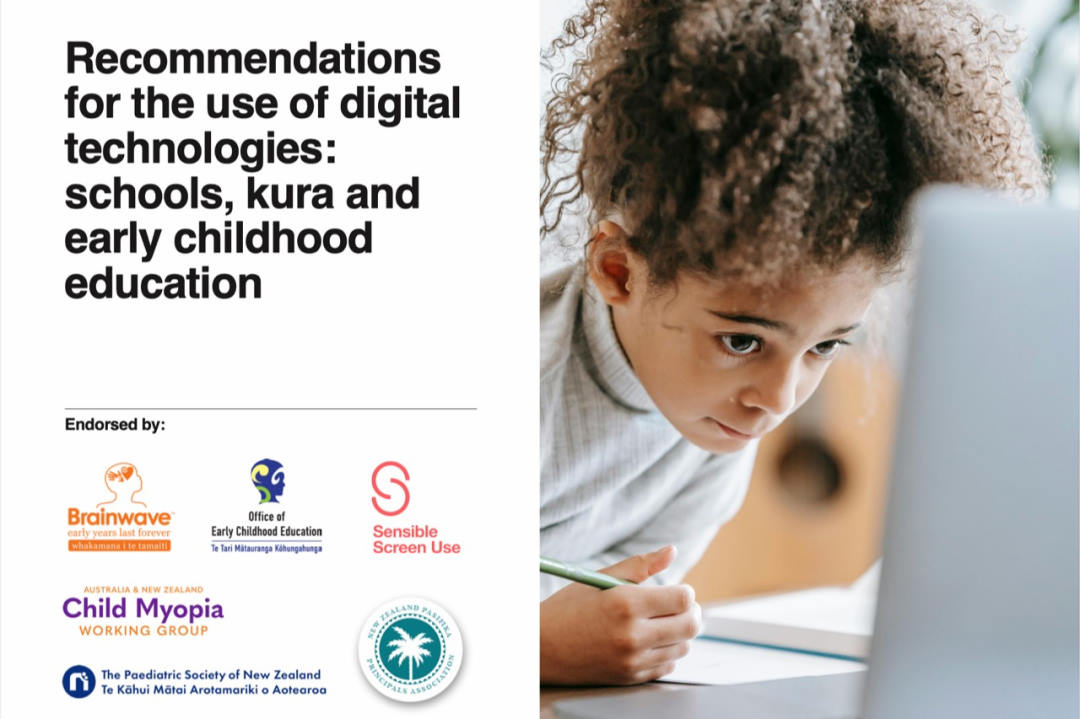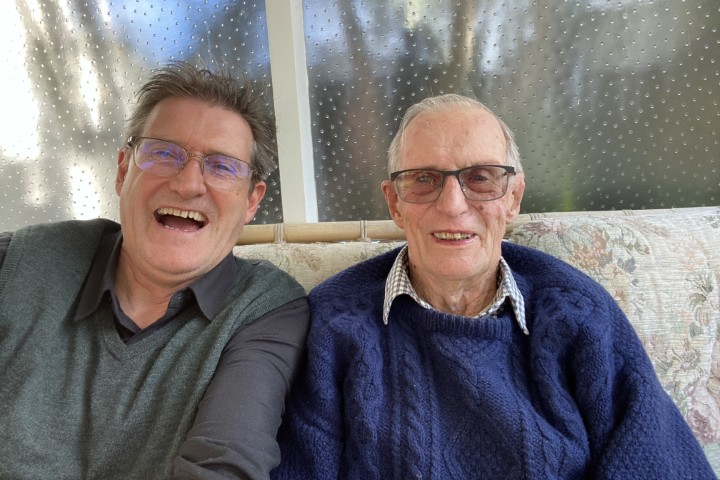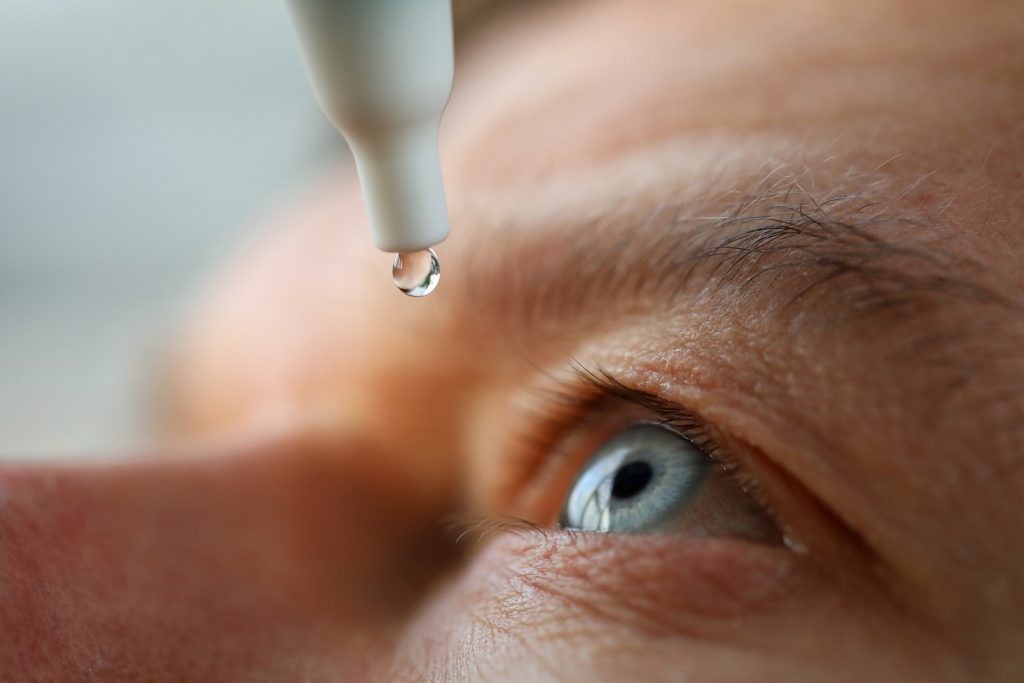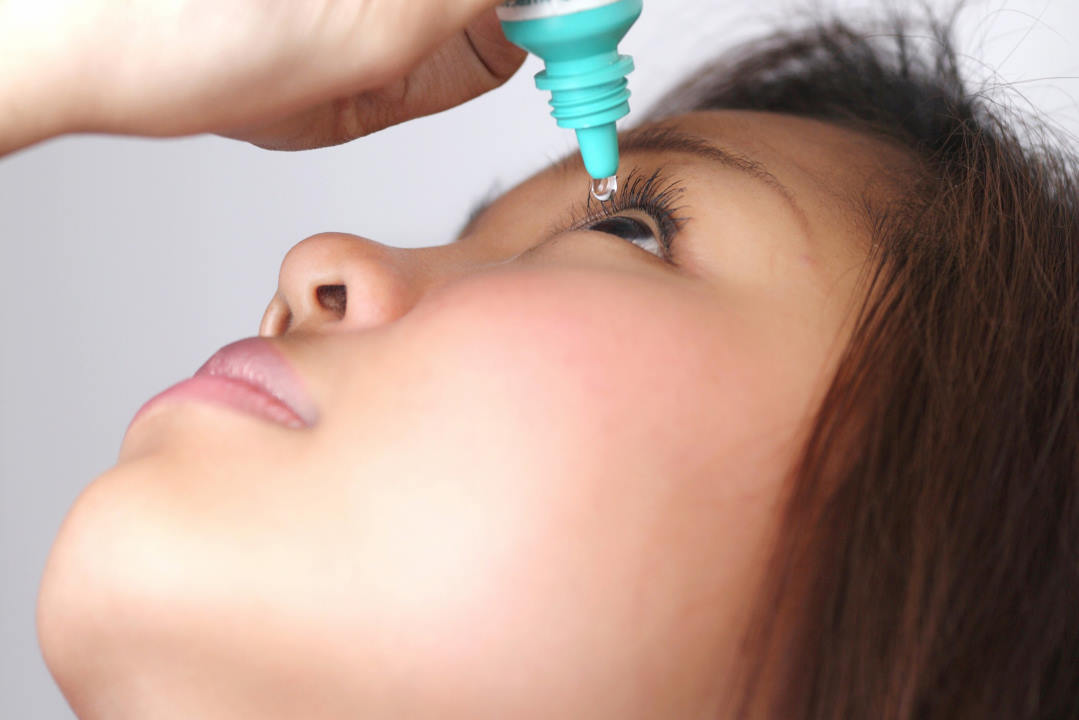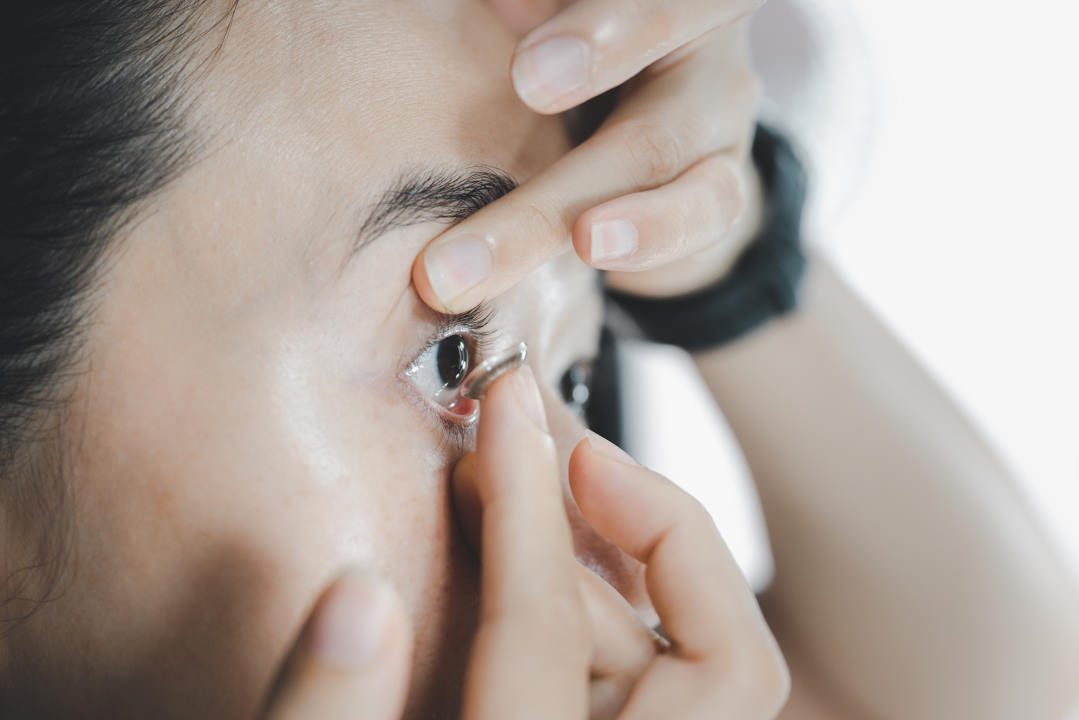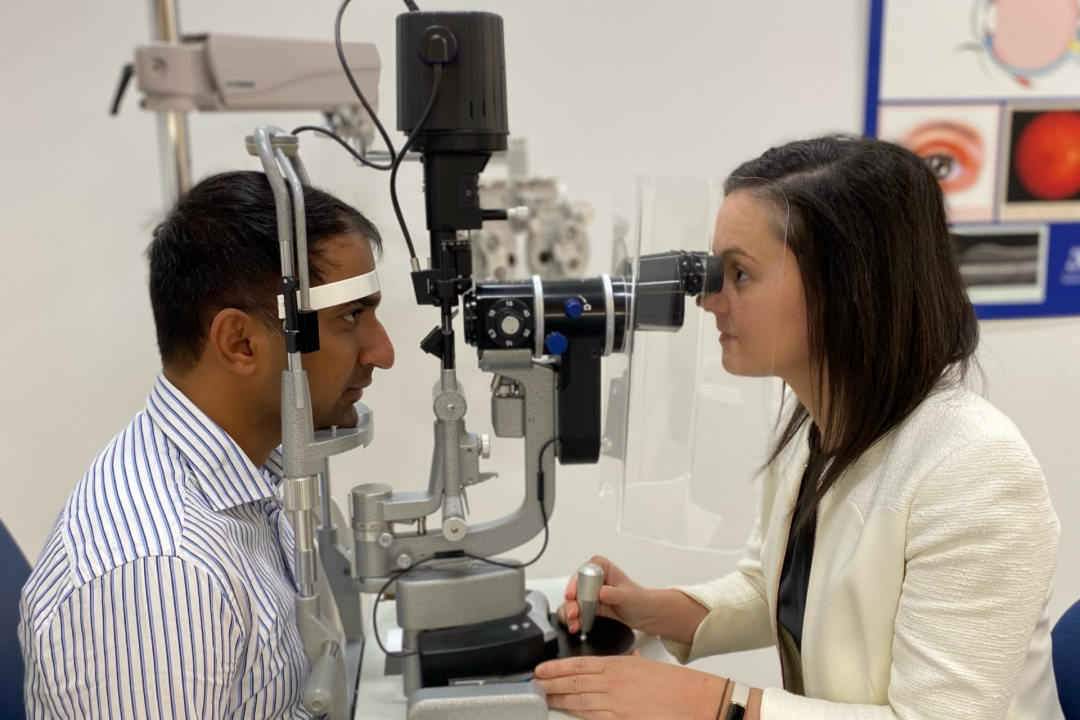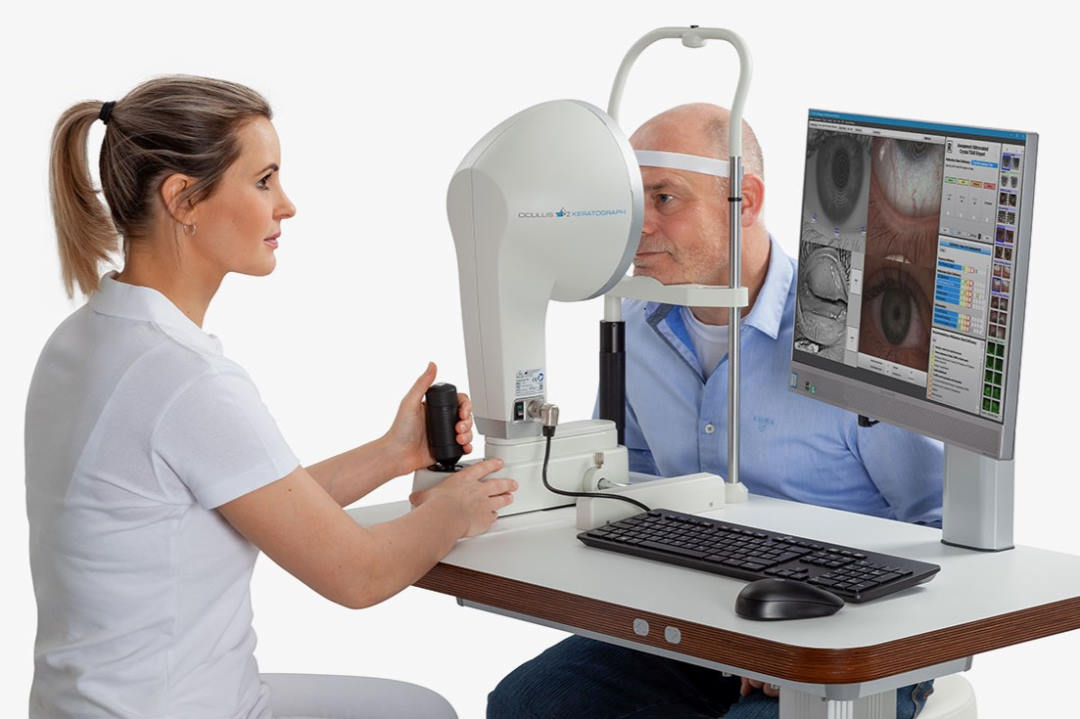Education, screen-based digital technologies and youth eye health
Young people in New Zealand have among the highest rates of screen use in the world, both at home and at school. It’s now widely accepted within scientific communities that, along with opportunities for learning, social connection and having fun, digital devices and internet access also present a risk of harm to the health and wellbeing of children and adolescents, across numerous health areas.
Children’s eye health, including dry eye disease, is one area that has caused concern among clinicians. Previously considered a disease of the elderly, recent studies have found increasing dry eye symptoms in children and youth1. Research into this topic has linked screen-based digital device use as the primary risk factor associated with dry eye disease in young people2. With dose-dependent relationships found between duration of daily screen use and dry eye in a number of studies and, in the context of wider impacts of screen use, potential interventions to mitigate risk need to consider a child’s 24-hour-day.
Until now, in the New Zealand education sector the focus has been on increasing access to technology, ensuring children are gaining important digital skills and net-safety measures. More recently, the United Nations has called for urgent discussion and regulation of the digitisation of education, including consideration of the risks to children’s health and development3. The United Nations Educational, Scientific and Cultural Organisation (UNESCO), after a comprehensive review of technology in education, highlighted the contribution of excessive screen use in school to overall risk for young people4. In addition to health impacts, its review noted that while some use of technology could support learning, frequent device use in class was also linked to reduced educational outcomes, including digital skills.
The need for guidance for screen use in New Zealand classrooms was established in meetings I attended, along with representatives from the health and education ministries and the Paediatric Society of New Zealand (PSNZ). Together with a diverse group of researchers, clinicians and educators, including previous Ocular Surface Laboratory (OSL) member Professor Alex Müntz, we independently developed the evidence-based Recommendations for the use of digital technologies: schools, kura and early childhood education5. The recommendations include interventions to lower risk, with advice on screen-time limits (age dependent), eye breaks, blinking exercises, ergonomics and lighting, as well as having regular vision and hearing tests and more. These were reviewed and endorsed by the PSNZ and others.
In the initial phase of development, a narrative review with a systematic search strategy to explore the positive and negative impacts of digital technologies on health and wellbeing of children and youth was performed1. The recommendations were informed by these findings, together with existing international legislation and guidelines, subject-expert input, stakeholder consultation and feedback.
We live in a changing world where young people will need excellent digital skills for future success in the workplace, in higher education and even to participate in society. There is a need to better understand the impacts of screen use on the ocular surface in youth, to find out if youth and whānau are experiencing concerns and to explore further steps we can take to allow young people to make the most of opportunities that digital technologies can afford, while supporting healthy vision. This will be the focus of my master’s research in 2024 as I pursue my desire to build on previous efforts and further contribute to the understanding of these challenges.
To take part in a survey on screen use in 12–18-year-olds as part of this research, please visit: https://redcap.auckland.ac.nz/surveys/?s=ETD9HRD3DYJCRDL3
References
1. Cullen J, Muntz A, Marsh S, Simmonds L, Mayes J, O'Neill K, Duncan S. Impact of digital screen use on health and wellbeing of children and adolescents: A narrative review. New Zealand Journal of Physiotherapy, 2024 Mar: 52(1), 62–77.
2. Muntz A, Turnbull PR, Kim AD, Gokul A, Wong D, Tsay TS, Zhao K, Zhang S, Kingsnorth A, Wolffsohn JS, Craig JP. Extended screen time and dry eye in youth. Cont Lens Anterior Eye. 2022 Oct;45(5):101541.
3. United Nations General Assembly. Impact of the digitalization of education on the right to education: Report of the Special Rapporteur on the right to education, Koumbou Boly Barry (Fiftieth session, agenda item 3). United Nations. 2022
4. UNESCO. Global Education Monitoring Report Summary 2023: Technology in education: A tool on whose terms? 2023
5. Cullen J, Muntz A, Marsh S, Simmonds L, Mayes J, O'Neill, Duncan, S. Recommendations for the use of digital technologies: schools, kura and early childhood education. Paediatric Society of New Zealand. 2024. https://www.paediatrics.org.nz/knowledge-hub/view-resource?id=59

Julie Cullen, a paediatric physiotherapist with Te Whatu Ora Auckland, is currently completing her Master of Health Sciences with the OSL in the Department of Ophthalmology at the University of Auckland, under the supervision of Prof Jennifer Craig.









